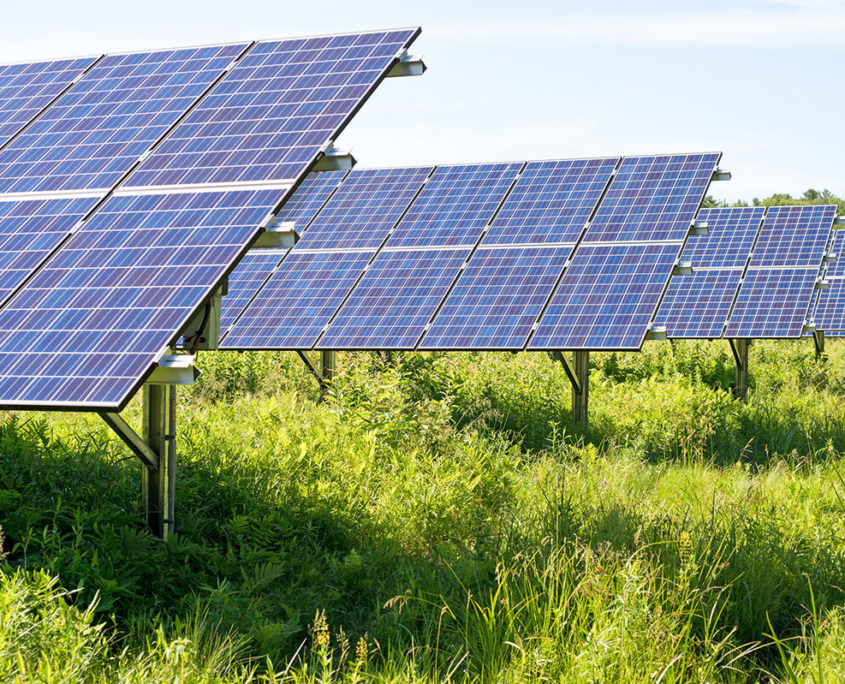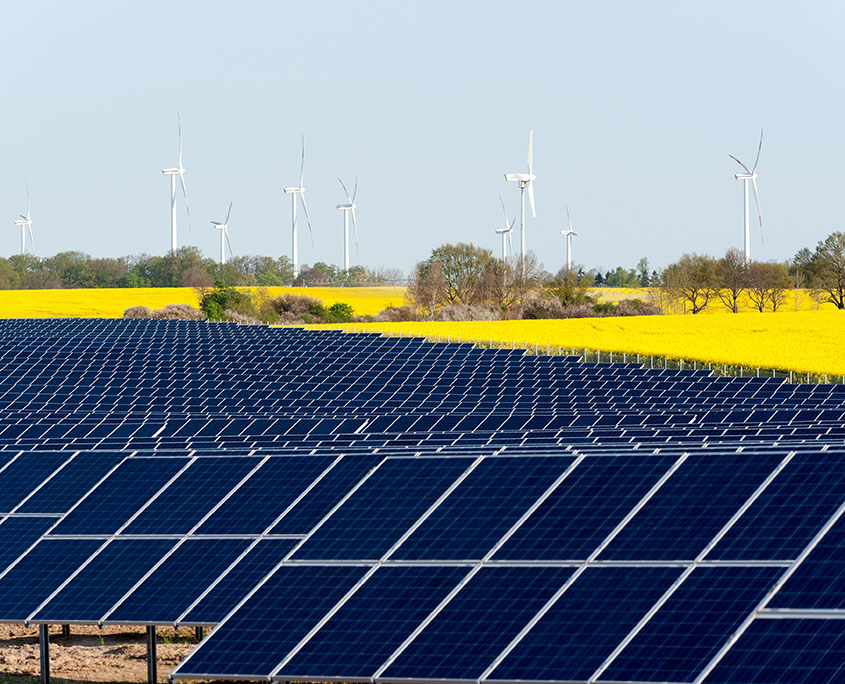Pull Out Testing for Solar Farms
Geotechnical Services for Renewable Energy Projects
Pull Out Testing for Solar Farms
We conduct detailed site investigations and ground investigations to have a clear understanding of the ground conditions of the proposed renewable energy site. As part of our geotechnical services for renewable energy we conduct pull out testing. Pull-out tests are performed to assess the anchorage or pull-out capacity of the proposed site of the solar farm to ensure the correct foundation or archoring system is selected.
We develop safe and cost-effective foundation solutions for wind turbines, wind farms, solar farms, battery energy storage systems, and other renewable energy projects.
Geotechnical Services for Renewable Energy
Pull Out Testing: A Crucial Step in Ensuring the Stability of Solar Farms
In recent years, solar farms have emerged as a key player in the transition to renewable energy. As the demand for clean energy rises, the need for robust and reliable infrastructure to support these solar installations has never been more critical. One of the fundamental techniques employed to ensure the stability and longevity of solar panel mounts is Pull Out Testing. This method plays a vital role in maintaining the structural integrity of solar farms, ensuring they can withstand various environmental challenges.
What is Pull Out Testing?
Pull Out Testing is a procedure used to assess the holding capacity of ground anchors and screws that secure solar panel mounts to the ground. This test involves applying an upward force to the anchor or screw until it is dislodged or reaches a predetermined force limit. The results provide crucial data on the maximum load the anchors can support, helping engineers design foundations that can endure the stresses imposed by wind, snow, and other environmental factors.
Why Pull Out Testing is Essential for Solar Farms
- Ensuring Stability and Safety: Solar panels are often installed in areas with varying soil types and environmental conditions. Pull Out Testing helps determine the most suitable anchoring solution for each specific site, ensuring the panels remain stable and safe, even in adverse weather conditions.
- Optimising Design and Cost: By accurately assessing the holding capacity of different anchors, engineers can optimise the design of solar farms. This ensures that the foundations are neither over-engineered nor under-engineered, leading to cost savings in materials and installation without compromising safety.
- Compliance with Regulations: In many regions, building codes and regulations require solar farms to undergo rigorous testing to ensure their structural integrity. Pull Out Testing is a standard method to meet these regulatory requirements, providing documented proof of compliance.
- Long-term Performance: Solar farms are designed to operate for decades. Pull Out Testing ensures that the anchoring systems can withstand the test of time, contributing to the overall reliability and efficiency of the solar farm throughout its lifespan.
The Testing Process
The Pull Out Testing process typically involves the following steps:
- Site Assessment: Engineers conduct a thorough assessment of the site to understand the soil conditions and identify suitable locations for testing.
- Installation of Test Anchors: A selection of test anchors or screws is installed at designated points on the site.
- Application of Load: A hydraulic jack or similar device is used to apply an upward force to the test anchors. The force is gradually increased until the anchor is either pulled out of the ground or reaches a specified load limit.
- Data Collection and Analysis: The data from the test is recorded and analysed to determine the holding capacity of the anchors. This information is then used to design the foundation system for the entire solar farm.
Why Pull Out Testing is Important.
Pull Out Testing is essential to ensure the correct method of anchoring is used when installing solar farms. A detailed understanding of the solar farm site and the ground conditions throughout the site is required to make sure the optimum and most cost effective anchoring solution is specified for that specific site conditions.
In previous cases, testing revealed that the initial choice of anchors was insufficient for the sandy soil conditions prevalent at the site. Based on the test results, our engineers selected a different type of anchor that provided greater holding capacity, ensuring the stability of the solar panels even during high winds. This adjustment not only enhanced the safety and reliability of the solar farm but also resulted in significant cost savings by avoiding potential future repairs and maintenance.
Conversely, we have also found that results from pull out tests have revealed that the original foundation designs were over engineered and the framework could be set directly onto the ground, saving time and money.
Pull Out Testing is an indispensable part of the construction and maintenance of solar farms. By ensuring the stability and safety of solar panel mounts, this testing method supports the growing reliance on solar energy as a sustainable power source. As the renewable energy sector continues to expand, Pull Out Testing will remain a crucial tool in the quest for efficient and resilient solar installations.
Earth Environmental & Geotechnical Ltd provides Pull Out Tests, Plate Bearing Tests, Ground Investigations and Design Works for Renewable Energy Projects throughout the UK.
Earth Environmental & Geotechnical Ltd provides a comprehensive range of Geotechnical Consultancy Services for Renewable Energy Projects including pull out tests and plate bearing test. We have recently undertaken several site investigations for solar farms and have substantial experience of Geotechnical Services for Renewable Energy Sector.
Over the last 10 years, we have worked in all regions of the UK providing site investigations, ground investigations, and design works for renewable energy projects working with an extensive range of renewable energy providers. Our services ensure that your renewable energy project is developed on solid foundations with a clear understanding of the ground conditions. Geological and geo-environmental conditions of the development site can have a significant influence on foundation designs for wind turbines and solar farms. We work with our clients to ensure the correct ground investigation methods are used for each renewable energy project.
Our services include:
- Ecological surveying
- Topographical surveys
- Resistivity surveys
- Pull Out Tests
- Thermal conductivity surveys
- Cable percussive drilling
- Dynamic window sampling
- Dynamic cone penetration testing (DCP)
- Trial pitting
- Soil infiltration testing
- Plate bearing tests
- Geotechnical laboratory analysis
- Environmental laboratory analysis
On wind farm projects we also can carry pull out anchor testing.
Over the last 10 years, we have been involved in some innovative projects and developed substantial experience in the renewable sector including wind farms, solar farms, and battery storage centres.
We work closely with our renewable energy clients to develop safe and cost-effective foundation solutions for solar farms, battery energy storage systems (BESS) and wind turbines, even on difficult ground conditions.
If you need assistance with ground investigation and design works please contact us, at headoffice@earthenvironmental.co.uk
Ground investigations & Design Works for Renewable Energy Projects
Earth Environmental & Geotechnical Ltd provide Geotechnical Consultancy Services including Pull Tests, Plate Bearing Tests, Ground investigations & Design Works for Renewable Energy Projects throughout the UK. We conduct detailed site investigations and ground investigations to have a clear understanding of the ground conditions of the proposed renewable energy site. We develop safe and cost-effective foundation solutions for wind turbines, wind farms, solar farms, battery energy storage systems, and other renewable energy projects.
We have substantial experience in the renewable energy sector.








